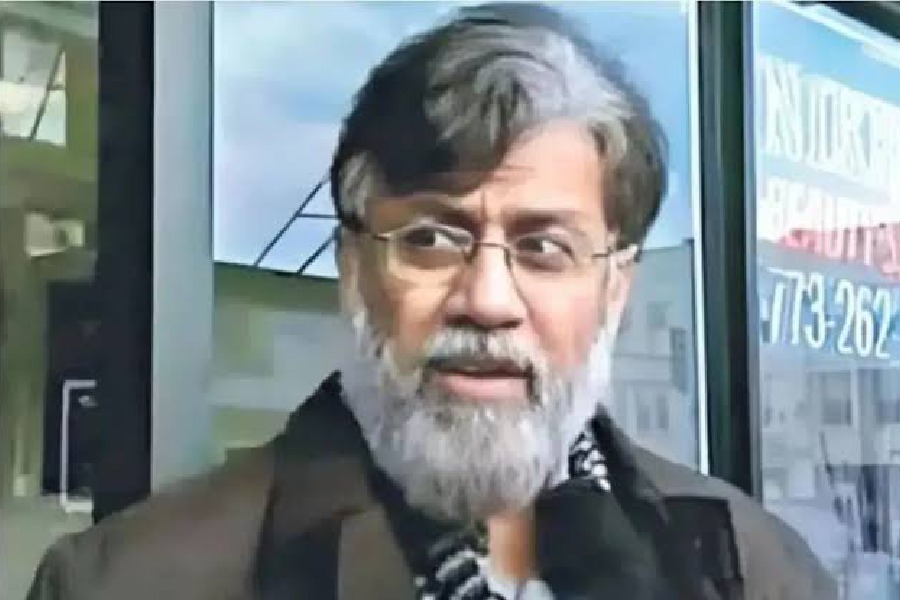 |
| Women hold up placards in support of ILP at students’ field, Jaiaw, in Shillong. File picture |
Shillong, Nov. 3: Newton’s Third Law of Motion — to every action there is always an equal and opposite reaction — appears to have crept into the minds of the powers that be to counter the inner-line permit (ILP) campaign launched by more than a dozen pressure groups.
Last week, while presenting the “perceived benefits” of the ILP during the launch of the public consultation on the draft Meghalaya Regulation of Landlords and Tenants Verification bill, Meghalaya principal secretary (political department) Kuljit Singh Kropha also presented the reasons why the permit regime cannot be implemented in the state.
According to the presentation, the perceived benefits of the ILP include protection against influx, prevention of land alienation, greater employment opportunities and opportunities in trade and business.
At the same time, Kropha enlisted the following as “adverse” perceptions about the state if ILP is implemented. They include an impact on tourism, inflow of investment, impact on economy, reverse migration, and reaction from other states. He also pointed out that the experience of other states where ILP had been implemented was “not encouraging”.
However, pro-ILP groups have been maintaining that even without the ILP, the 41-year-old state has “not progressed”.
On why ILP cannot be implemented in the state, Kropha said the Bengal Eastern Frontier Regulation, 1873 — from where the permit regime owes its origin — was applicable to the districts of Kamrup, Darrang, Nowgong, Sibsagar, Lakhimpur, Garo hills, Khasi and Jaintia hills, Naga Hills, Cachar, Sadiya Frontier Track, and Lushai Hills District in its original form.
“Subsequently, the Regulation was repealed in its application to the Garo hills by the Repealing Act of 1897 (V of 1897),” he said, adding, that if the ILP is implemented now only in the Khasi-Jaintia hills, then people from the Garo hills will need a “permit” to enter Khasi-Jaintia hills.
“For extension to whole state, a new law has to be made by the Union government as the subject matter falls under the Union List,” he added.
While tabling a resolution in the state legislature last month, HSPDP legislator Ardent Miller Basaiawmoit had stated: “Yes, the Garo hills district of the erstwhile province of Assam was removed from the ILP ambit by a Repealing Act of 1897. However, it must be understood here that the resolution on the repeal by the then Province of Assam had not been produced. This fact has also been admitted by the state government at the high-level committee on influx.”
Kropha pointed out that in Shillong, a cosmopolitan hub with a sizeable chunk of non-indigenous population as permanent residents of the state, anxiety about unnecessary harassment might crop up.
“Meghalaya is a corridor for transit to the Barak valley and to Mizoram and Tripura. There could be legal and administrative implications. There are also crucial differences with Mizoram, Arunachal Pradesh and Nagaland,” he said.
On the legislative reach of the state in relation to the ILP, Kropha said the state “cannot legislate”, and cited the experience of “The Meghalaya Residential Permit Bill, 1973”.
“The bill had sought to provide that no person who is not a permanent resident or a Scheduled Tribe resident in Meghalaya should reside in a notified area for a period of more than four months without prior permission of the competent authority,” he said.
Kropha said the bill was sent to the President who returned the same without assenting to it.
He also enlisted the constitutional guarantees and other legislative measures to safeguard the interests of the people of the state.
Being a state where the district councils are operational, he said the councils have the powers to legislate on land management, appointment or succession of chiefs or headmen, inheritance of property, marriage and divorce, social customs, administration of justice, money lending and trading by non-tribals.
However, a catch exists here. According to Paragraph 12A of the Sixth Schedule, the law or regulation made by the district council whether made before or after the law made by the legislature of the state of Meghalaya, shall, to the extent of repugnancy, be void and the law made by the Legislature of the State of Meghalaya shall prevail.
To prevent land alienation, the Meghalaya Land Transfer (Regulation) Act, 1971, was enacted, Kropha said.
“To safeguard the educational and employment opportunities, reservation in the ratio of 40 per cent for Khasi and Jaintia, 40 per cent for Garos, 5 per cent for other tribals of the state has been put in place,” he said.
Autonomous district councils have enacted the trading by non-tribal regulation while the Meghalaya (Benami Transactions Prohibition) Act, 1980, was enacted to prohibit benami transactions between a tribal and a non-tribal, Kropha said.
At the same time, he said 55 out of 60 seats in state legislative Assembly have been reserved for tribals while the Inter-State Migrant Workmen (Regulation of Employment and Conditions of Service) Act, 1979, is being implemented.
Fresh protests
Pro inner-line permit (ILP) groups will organise night road blockades from 8pm to 5am on Tuesday, Wednesday and Thursday across Meghalaya.
This decision was taken at a meeting of the 14 pressure groups yesterday, Khasi Students’ Union (KSU) president Daniel Khyriem said.
“We are forced to adopt such methods owing to the adamant attitude and failure of the Mukul Sangma government to implement the ILP, as recommended by the high level committee on influx in 2012,” Khyriem said.
He said it was evident that the present government was a “one-man” government. “The situation warrants the chief minister to be present, and resolve the burning issue of the state. But his foreign trip speaks volumes of his seriousness on the issue of influx. This is another compelling reason to view with scepticism the claim and commitment of the government to resolve the issue,” he added.
The chief minister, along with a team of officials from the commerce and horticulture departments, left for Slovakia from New Delhi yesterday. The team is expected to return to India on Tuesday.
Khyriem also said the ILP issue was still very much alive in the state, as the government had not produced any documentary proof on the claim that the Garo hills region was repealed from the Bengal Eastern Frontier Regulation, 1873, in 1897. He also appealed to the public to continue extending support to the groups for the implementation of the ILP, which would safeguard the interests of the indigenous people.










